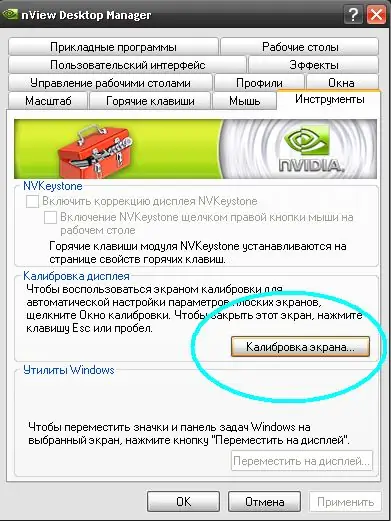If you get tired quickly while working at the computer, and on the screen you see unnaturally large shortcuts and stretched letters in the start-up, then it is important for you to correctly calibrate the monitor so that your eyes do not get tired for a long time. Follow simple manipulations to fix this problem.

Instructions
Step 1
On an empty spot on the desktop, right-click, select Properties to open the Display Properties dialog box.
Step 2
Click on the "Options" tab. The display line must indicate your video card. If this line says "Standard display", most likely, you do not have the drivers installed and you need to download them from the manufacturer's website or install from the disk, if available. Most often, ATI or NVIDIA drivers will work. Only after installing the drivers will you be able to move on to the next step, since without them the monitor will not work correctly and your eyes will still get tired quickly.
Step 3
With the display properties dialog open, change the resolution to about 1280 by 800 pixels. Click the Apply button. The entire image on the monitor will turn off and quickly recover with the new settings. Make sure that you are comfortable looking at the monitor and that the letters do not blur in different parts of the screen.
Step 4
You will have 30 seconds to accept the changes in the dialog box that appears. If you did not see this dialog box, most likely, the installed drivers are not working correctly yet or are not suitable for your video card. Try restarting your computer for the drivers to take effect. If it still does not work out after that, it means that the drivers simply do not fit your hardware. It is important to find a driver created specifically for your graphics card.
Step 5
If you do not have an LCD screen, it is important to increase the refresh rate of your monitor. To do this, after adjusting the screen resolution, click the "Advanced" button in the monitor properties dialog box. In the window that opens, go to the "Monitor" tab. In the line "Screen refresh rate" change the indicator to the maximum possible. Refresh higher than 75-80 Hz is considered safe for long-term operation on monitors with a cathode-ray tube. After selecting the desired frequency, press the "Ok" button.






